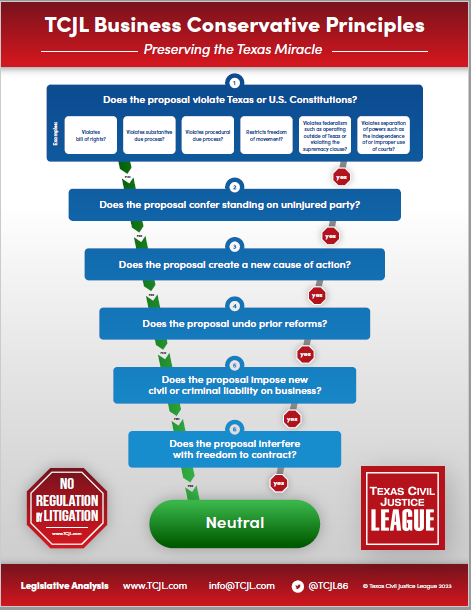 Prior to the birth of her third child by scheduled C-section, plaintiff was told by a member of the physician’s staff that the physician had recommended she have a tubal ligation to prevent a fourth pregnancy, which could be dangerous. The day before she went into the hospital to deliver, she paid for a tubal ligation. When she arrived at the hospital the next day, she told the staff she was going to have the procedure. She did not sign an informed consent for the procedure, and the physician never talked to her about it or informed her that he was not going to perform the procedure. The record of her post-partum visit indicates that the tubal litigation occurred, and no one on the staff informed her that the physician had not actually performed the procedure. Plaintiff subsequently became pregnant and gave birth to a healthy child.
Prior to the birth of her third child by scheduled C-section, plaintiff was told by a member of the physician’s staff that the physician had recommended she have a tubal ligation to prevent a fourth pregnancy, which could be dangerous. The day before she went into the hospital to deliver, she paid for a tubal ligation. When she arrived at the hospital the next day, she told the staff she was going to have the procedure. She did not sign an informed consent for the procedure, and the physician never talked to her about it or informed her that he was not going to perform the procedure. The record of her post-partum visit indicates that the tubal litigation occurred, and no one on the staff informed her that the physician had not actually performed the procedure. Plaintiff subsequently became pregnant and gave birth to a healthy child.
These were the facts in Michael R. Noe, M.D., Individually and d/b/a Sun City Women’s Health Care v. Grissel A. Velasco (No. 22-0410; May 10, 2024), which we first reported in 2022. Plaintiff sued Noe and Sun City for medical negligence, medical battery, DTPA, fraud, breach of express warranty, and intentional infliction of emotional distress, seeking past and future medical expenses, past and future pain and suffering and mental anguish damages, and compensation for financial obligations incurred in the care and support of the fourth child. The trial court granted the defendants’ motion for summary judgment on all claims.
The court of appeals affirmed in part and reversed in part. It affirmed the trial court’s dismissal of all claims other than the medical negligence claims. With respect to those claims, however, the plaintiff produced an expert report by a board-certified OB-GYN. The expert opined that the physician had deviated from the standard of care by failing to inform plaintiff before her C-section that he was not going to perform the procedure and then not disclosing that fact to her thereafter. Instead, the physician should have informed the patient that she was at risk from another pregnancy and to use another form of contraception to avoid unwanted pregnancies. The failure to do so proximately caused the fourth-high risk pregnancy and Cesarean and plaintiff’s damages.
The court of appeals held that the expert report contained “some evidence Appellees failed to conform to the applicable standard of care when they failed to inform Appellant she did not receive a BTL despite possessing medical records showing she thought she received the surgery.” The court found that this evidence was sufficient (more than a mere scintilla) to overcome a no-evidence summary judgment motion on duty and breach and created an issue of material fact under a traditional summary judgment standard. Defendants sought review, which SCOTX granted.
In an opinion by Justice Huddle, SCOTX reversed and reinstated the trial court’s judgment. As a matter of settled Texas law, the Court ruled that parents “cannot recover the economic costs after birth of raising a healthy child who resulted from an unplanned pregnancy,” even if the pregnancy resulted from a physician’s negligence in failing to perform a sterilization procedure that would have avoided the pregnancy. Parents may, however, recover “the medical expenses associated with the failed procedure that produced the healthy but unwanted child.” Beyond that, court of appeals were divided over the extent of additional economic and noneconomic damages available in a “wrongful pregnancy” context. Flax v. McNew, 896 S.W.2d 839 (Tex. App.—Waco 1995, no writ) went the farthest, allowing recovery of prenatal and postnatal medical expenses, pain and suffering during pregnancy and delivery, loss of consortium, the cost of the corrective sterilization procedure, emotional distress, lost wages, pain and suffering associated with the corrective procedure, and any permanent impairment suffered by the parents. But others, including the Tyler and both Houston courts of appeals, rejected this approach, permitting recovery only of the cost of the failed procedure itself.
Observing that courts have universally “refuse[d] to characterize the birth of a healthy (but unwanted) child as a compensable legal injury” and that “the intangible benefits of parenthood far outweigh” the burdens (not to mention the inherent impossibility of “ascribing value both to human life and to the intangible costs associated with parenthood”), the Court commenced its analysis by stating that Texas law does not recognize a cause of action for wrongful pregnancy. But it does recognize that a medical negligence claim stemming from the negligent performance or non-performance of a sterilization procedure. The question then became the extent to which damages are recoverable for such a claim. For the Court ruled out recovery of non-economic damages for the birth of a healthy child, reversing the court of appeals on this point. Second, the Court limited the recovery of economic damages to “medical expenses incurred during the pregnancy and postpartum period” and “the expenses incurred in the sterilization procedure that was not successfully performed.” Finally, turning to Plaintiff’s proof of damages, the Court concluded that Plaintiff failed to present any evidence “demonstrating she incurred any medical complications or expenses as a result of the pregnancy or birth” (in this case, the physician refunded the amount Plaintiff paid for the sterilization procedure she didn’t receive and CHIP paid the expenses of the birth). The Court thus reversed the court of appeals and reinstated the trial court’s take-nothing judgment.
The Court undoubtedly reached the right result in this case, but we cannot but be somewhat troubled by the some of the assumptions the Court (probably necessarily) made in reaching that result. The Court, using language from a Houston [1st] Court of Appeals opinion, averred that “Texas public policy strongly favored a rule that prohibited recovery of mental anguish stemming from a health child’s birth, based on ‘the instrinsic value of human life, the importance of promoting stable families, and the inherent difficulties in predicting and proving mental anguish under these circumstances.” This statement makes three suppositions that may or may not stand up to empirical analysis. It is at least debatable whether “Texas public policy” always and everywhere recognizes the “intrinsic value of human life” or necessarily promotes “stable families.”
For example, Texas ranks:
- last in the nation in insurance coverage for children;
- third to last in children’s health care;
- next to last in access to high-quality prenatal and maternal care;
- second in the number of children in an underfunded, overstressed, and arguably mismanaged foster system;
- 45th in access to mental healthcare;
- 26th in divorce rate;
- 33rd in access to treatment for drug abuse;
- 10th in the overall poverty rate;
- 45th in child wellbeing;
- near the top of states with the most births out of wedlock (more than 41%, hardly a recipe for “family stability”);
- 48th in the amount of money spent per student in public schools;
- 49th in high school graduation rates;
- 3rd in states with the lowest literacy rates (behind only New Mexico and California;
- 38th in juvenile incarceration rates;
- 7th in overall incarceration rates;
- 1st in the number of executions since 1977 (by a factor of nearly five);
- 41st in economic opportunity;
- in the top ten states for food insufficiency; and
- 5th in child food insecurity.
We are well aware that there are lies, damn lies, and statistics, but these numbers haven’t changed very much in a long time, and the accuracy of the evidence is all too depressingly before us. The point of this discussion is simply to observe that the question of how highly “Texas public policy” values human life is open to interpretation, particularly if the a person happens to be on the receiving end of the policies reflected in the foregoing data. The El Paso Court of Appeals, though it undoubtedly reached an unsustainable conclusion as a jurisprudential matter, did not gloss over the grim and very real (and expensive) prospect of bringing an “unwanted” child into a world with these levels of economic, social, and physical precarity. Obviously, courts are not the place to make public policy period, much less intervene in the politics of policymaking in these areas. In fact, the courts themselves are all too frequently faced with trying to deal with the effects of those policies at the ground level. Adding to the problem is that Texas ranks 44th in access to legal aid for people who can’t afford it. That only makes the problems worse. Still, we should be careful about broadly characterizing the “intrinsic value of human life” as something we don’t clearly put a price on every day.
Finally, as to the “inherent difficulties in predicting and proving mental anguish under these circumstances” (i.e., associated with “unwanted” birth), it is not easy to distinguish between mental anguish in that scenario and mental anguish associated with “unwanted death.” While the “intangible benefits of parenthood” are undeniable, at least in the abstract, they are not unmixed with the very tangible emotional and physical costs associated with the struggle to provide for that child without sufficient resources to do so. In fact, juries assess the “value of human life” every day, and if they can determine “loss of consortium” or “pain and suffering” associated with a loss of life, it is far from obvious that they cannot assign a value to the addition of one that was not looked for and that may have substantial adverse (and potentially long-term) effects on a person’s level of emotional distress and his or her other relationships. The plain fact is that if we are going to have noneconomic damages at all, determining them will always involve the factfinder in trying to figure out what a life is worth, whether one’s own or someone else’s. As long as everyone recognizes that whatever that value may be is as arbitrary in one case as it is in another, we must accept that the adoption of a policy barring the recovery of that value in one type of case is likewise arbitrary.








